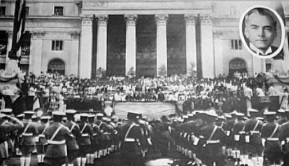THE PHILIPPINE COMMONWEALTH

The Commonwealth of the Philippines was the political designation of the Philippines from 1935 to 1946 when the country was a commonwealth with the United States. Before 1935, the Philippines was an insular area with non-commonwealth status, and before that, it had been a United States territory U.S. territory. The creation of the Commonwealth was envisioned under the Philippine Independence Act, popularly known as the Tydings-McDuffie Act as a ten-year transitional government in preparation for full Philippine independence and sovereignty which was promised through the Philippine Autonomy Act or Jones Law It marked the end of the colonial eras as well as the transition of the nomenclature of the Philippines from the plural "Las Islas Filipinas" and "Philippine Islands" of the Spanish and American colonial periods, to the singular, "Philippines", which is a sign of unity, sovereignty, and national identity.
The Commonwealth had its own constitution, which remained effective until 1973, and was self-governing although foreign policy and military affairs would be under the responsibility of the United States, and certain legislation required the approval of the American President.
It featured a very strong executive, a unicameral National Assembly, and a Supreme Court, all composed entirely of Filipinos, as well as an elected Resident Commissioner to the United States House of Representatives (as Puerto Rico does today). An American High Commissioner and an American Military Advisor, Douglas MacArthur headed the latter office from 1937 until the advent ofWorld War II in 1941, holding the military rank of Field Marshal of the Philippines. After 1946, the rank of field marshal disappeared from the Philippine military.
In 1939-40, after an amendment in the Constitution, a bicameral Congress, consisting of a Senate, and of a House of Representatives, was restored replacing the National Assembly.
